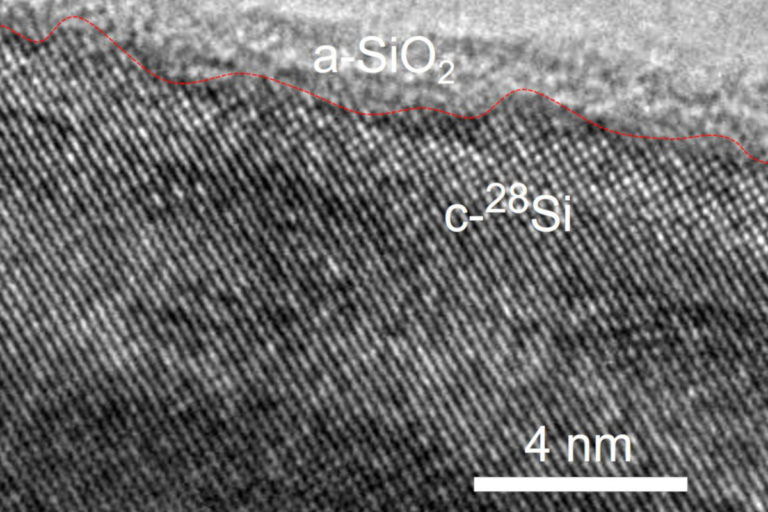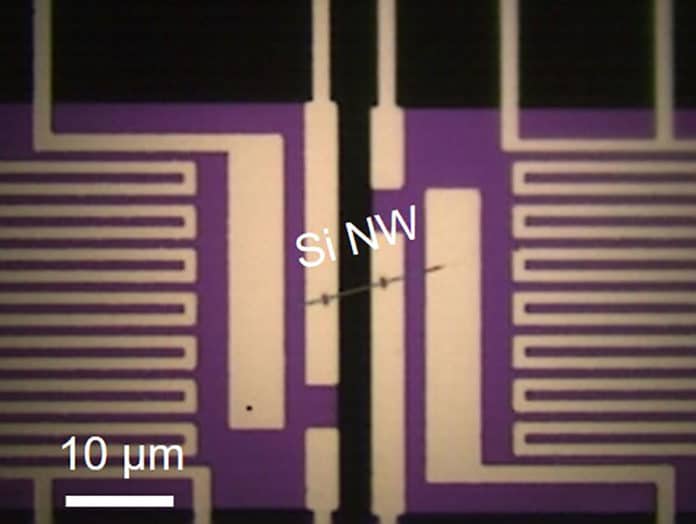Our electronics are relatively affordable because silicon – the material of choice for computer chips – is cheap and abundant. But although silicon is a good conductor of electricity, it is not a good conductor of heat when it is reduced to very small sizes – and when it comes to fast computing, that presents a big problem for tiny microchips.
Now, scientists have found that nanowires made of a certain isotope of silicon can conduct heat 150% better than natural silicon nanowires, potentially leading to drastically cooler computer chips. The key material is the isotope silicon-28.
In its natural form, silicon is made up of three different isotopes – forms of a chemical element containing an equal number of protons but a different number of neutrons in their nuclei. About 92% of silicon consists of the isotope silicon-28, while around 5% is silicon-29 and the remaining 3% is silicon-30.
As phonons, the waves of atomic vibration that carry heat, find their way through silicon’s crystalline structure, their direction changes when they bump into silicon-29 or silicon-30, whose different atomic masses “confuse” the phonons, slowing them down. The phonons eventually get the idea and find their way to the cold end to cool the silicon material, but this indirect path allows waste heat to build up, which in turn slows your computer down, too.

In the past, researchers theorized that chips made of pure silicon-28 would overcome silicon’s thermal conductivity limit and therefore improve the processing speeds of smaller, denser microelectronics. It can improve heat conduction by around 10% – an improvement, but from the computer industry’s point of view, probably not enough to justify spending a thousand times more money to build a computer from isotopically pure silicon.
For their new study, researchers examined nanowires made from isotopically pure silicon-28. Using a technique called electroless etching, the team made natural silicon and silicon-28 nanowires just 90 nanometers in diameter – about a thousand times thinner than a single strand of human hair. They suspended each nanowire between two microheater pads outfitted with platinum electrodes and thermometers and then applied an electrical current to the electrode to generate heat on one pad that flows to the other pad via the nanowire.
The researchers expected only an incremental benefit – something like 20% – of using isotopically pure material for nanowire heat conduction. But to their great surprise, it performed 150% better than natural silicon nanowires with the same diameter and surface roughness.
High-resolution TEM (transmission electron microscopy) images of the material uncovered that a glass-like layer of silicon dioxide had formed on the silicon-28 nanowire surface. Further, computational simulation experiments revealed that the absence of isotope “defects” – silicon-29 and silicon-30 – kept the heat on track to travel through the silicon-28 nanowire’s “core.”
The team next plans to take their discovery to the next step: by investigating how to control, rather than merely measure, heat conduction in these materials. Researchers from Rice University, the University of Massachusetts-Amherst, Shenzhen University, and Tsinghua University participated in the study.
